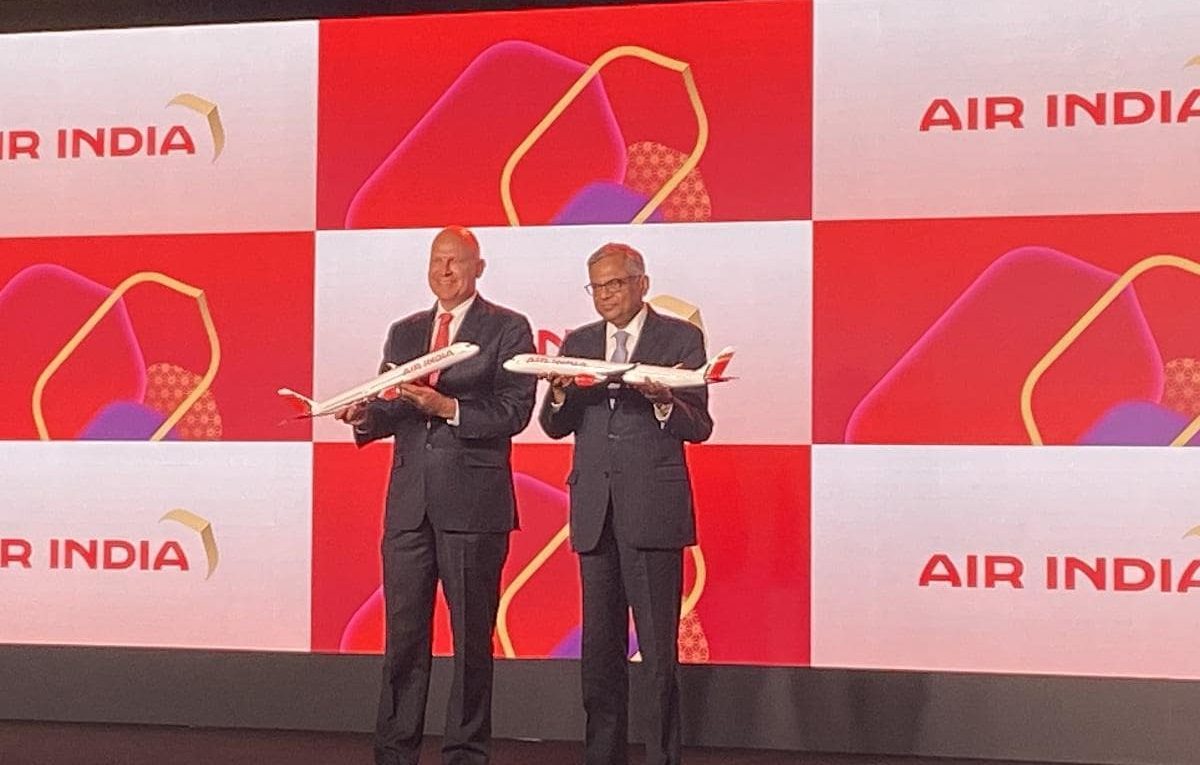Beyond just optics: why brands find custom typefaces significant?
Tata Group-owned airline Air India’s re-branding effort is nearing a crest after the carrier this month announced a cluster of changes such as a new livery design, a brand new logo called “The Vista”, and the introduction of a custom font established as “Air India Sans”.
The airline said the modern new brand identity captured the essence of a bold new India.
Introducing a new font places the carrier in the league of a few other global airlines that sport a custom typeface, such as British Airways and Southwest Airlines. In a statement, the airline said the new font married “confidence with warmth to position Air India as premium, inclusive, and accessible”.
“Airline identities (like fonts), particularly for national carriers, are expectantly something everybody has an opinion about because they play a crucial role as a country’s ambassador wherever they fly. The logotype is the most common identifier of an airline. It conveys the name and should always make a strong first impression,” said Edwin Schmidheiny, chairman and chief creative officer, Zurich-based global brand consultancy accent.
However, beyond subtle optics, establishing a typeface as part of a brand’s logotype and overall identity serves multiple purposes.
“It is more economical for larger brands to commission the creation of a custom-made typeface than to pay an annual licence fee to a foundry or the creator of a particular font,” said Anand Naorem, co-founder and executive creative director, BrandNewType, a creative company specialising in typography and experience design in cities such as Delhi, Goa, and Mumbai.
Agencies, typographers, and typeface designers flesh out a family of fonts after a tedious creative process and charge their clients a development fee. An agreement or a contract is signed between the developer of a typeface and the client to set the terms straight. Naorem suggested clients could do away with an annual licence fee by entering into an agreement with the developer to acquire the intellectual property rights for a typeface.
“For one small typeface, the development costs can go from Rs 20 lakh to Rs 25 lakh and complex scripts may require a few crores. The cost of acquiring the intellectual property (IP) for the font varies from foundry to foundry,” said Sidharth Loyal, co-founder and managing director, BrandNewType.
Naorem said the inherent intellectual property right rested with the person who created the font. Terms of a specific contract later transfer the rights to the client.
“To create a custom-designed proprietary font is very often part of a redesign programme, but this is just one of many design elements. Beyond the logo design, which is often based on a unique letterform, a proprietary font can help enhance the character of all written communication. And since the company owns it, there are no additional licence fees for the font,” Schmidheiny added.
Additionally, meta-data embedded in a typeface offers a layer of identification to its proprietor in case there is misuse.
“Meta-data such as IP, names of owners, and its creators are embedded within the typeface. In cases of misuse such as using a client’s fonts without permission can invite legal notice because the person does not hold sufficient permission to use it. A company can sue someone for misusing a custom-made, fully owned font once it is alerted by bots that track where the font is used digitally,” Naorem cautioned.
The creative process of building a typeface from scratch involves understanding the client’s brief, determining the scope of work, creating rough sketches of a font, and eventually generating an entire typeface.
“This discipline is a balance between science and art. One has to ensure the font is readable and can be used across different mediums such as mobile, web, and print. A standard timeline to create a font family ranges anywhere from six to eight months,” Naorem added.
As a result, Schmidheiny said, a custom font helps differentiate the brand from the competition and expresses the brand’s character or the specific culture. Moreover, investing in a custom font is not just a creative decision. It is a matter of reputation and competition in the market.
“It is not just a marketing decision, it is more of a business decision (for a brand). It is about getting all the stakeholders aligned (together),” Loyal added.
Schmidheiny said: “When done well, type design often goes unnoticed, but when done terribly, it stands out like a sore thumb.”
Overall, the announcement of Air India’s new font and logotype as part of its re-branding exercise has received mixed reactions on social media.
“The old Air India logotype looked like it was from a different era altogether, very heavy and industrial, and hard to read, particularly from far away (which is often the case with aircraft on the tarmac). The new logotype is more mature, and it has a more distinctive character. As far as the Air India Sans font, how it will be applied will determine its success,” said Schmidheiny.
